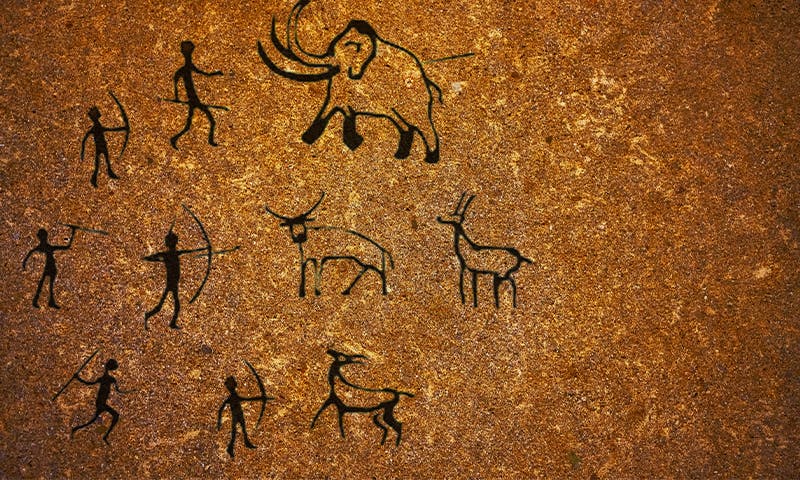GLand sloths, musk oxen, kangaroos. They all suffered the same fate as the dodo and disappeared from the face of the earth. This is just a small fraction of the large mammals that no longer exist. Of the 57 species of large herbivores known to have existed 50,000 years ago, only 11 remain. That’s a staggering extinction rate of 81 percent.
The remaining large herbivores, defined as large terrestrial mammals with an average adult weight of 2,200 pounds or more, include elephants, rhinos, giraffes, and hippos. Key Role They impact ecosystems from seed dispersal to landscape management.
For example, through their movement and feeding habits, elephants reduce the density of trees and shrubs. These open areas make way for plains animals such as antelopes and zebras, and the hollows and crevices left by broken branches and fallen trees provide habitat for small mammals, insects and fungi.
But without the ability to hide under logs or the agility of a gazelle, these large animals were especially dangerous to early humans looking to get the most out of their hunts. After all, if you’re looking for meat to fill your belly and wool to keep your family warm, the mammoth has a lot more to offer than a wild hare.
“We know that prehistoric humans put a lot of effort into hunting large species,” says Jens Christian Svenning, director of the Danish National Research Foundation’s Centre for Neobiosphere Ecological Dynamics at Aarhus University. Recent Publications Published in Cambridge Prism: Extinction They argue that hunting by humans, rather than climate change, is responsible for the extinction of most large herbivores over the past 50,000 years.
Mammoths have much more to offer than rabbits.
To reach their conclusion, Svenning and his team analyzed data on ancient extinctions, climate and human migration collected over the past 60 years. The study continues a debate that began in earnest in 1966, when an American paleontologist named Paul Schultz Martin first formulated his hypothesis. Excessive hypothesesHe suggested that migrating humans hunted large North American animals throughout the Pleistocene until their extinction. paper in Nature Similarly, the distribution of megafauna across time and space in prehistoric South America was found to correspond closely with human demographic data and the discovery of spear tips called fishtails in the archaeological record.
“This is a long-term debate,” Svenning says, arguing that improvements in research techniques and data quality over the past few decades have brought us closer to definitive answers about megafauna shifts. “We understand a lot more now than we did in the 1960s,” he says. “We’ve re-evaluated all the data, and on balance we can say that we can rule out climate as playing a major role in this species’ extinction.”
The data the researchers collected and analyzed showed that the locations and timing of extinctions do not coincide with patterns of global climate change, but correspond closely to patterns of human colonization, which occurred at different times and in different places around the globe, either contemporaneous with or subsequent to the arrival of humans.
“We conclude that this is one of the strongest and most consistent patterns in ecology,” Svenning says. His team’s findings indicate that this pattern of megafauna extinction began about 100,000 years ago, when humans first migrated out of Africa. Extinctions accelerated about 50,000 years ago, when Eurasia and Australia were colonized by humans who hunted large game.
The impact of being caught on a spear blade was huge for large mammals, who are naturally slow to reproduce – they have long gestation periods and long maturation processes – so the 46 large herbivores lost to history simply could not reproduce fast enough to offset the slaughter caused by humans.
Felisa Smith, a conservation paleoecologist and professor at the University of New Mexico, believes that the human influence on megafauna extinctions is no longer in debate: “I think research over the last few decades has demonstrated pretty convincingly that humans played a pretty large role in extinctions,” Smith says.
This isn’t a question of blame, says Svenning: “People living thousands of years ago didn’t have the big picture. These events happened on long time scales and vast spatial scales that no one could see the whole picture. Whatever people did, it was hard to see the consequences. And, of course, people just had to survive as best they could.”
Svenning hopes readers will come away with a better understanding of the relationship between humans, large animals, and the natural world. Large mammals remain at risk today, with more than half of all living species weighing over 22 pounds listed as vulnerable, endangered, or critically endangered by the International Union for Conservation of Nature. “When you restore forests, you can’t just think about the trees,” Svenning says. “You have to think about the animals that live there.” ![]()
Lead image: maradon 333 / Shutterstock


